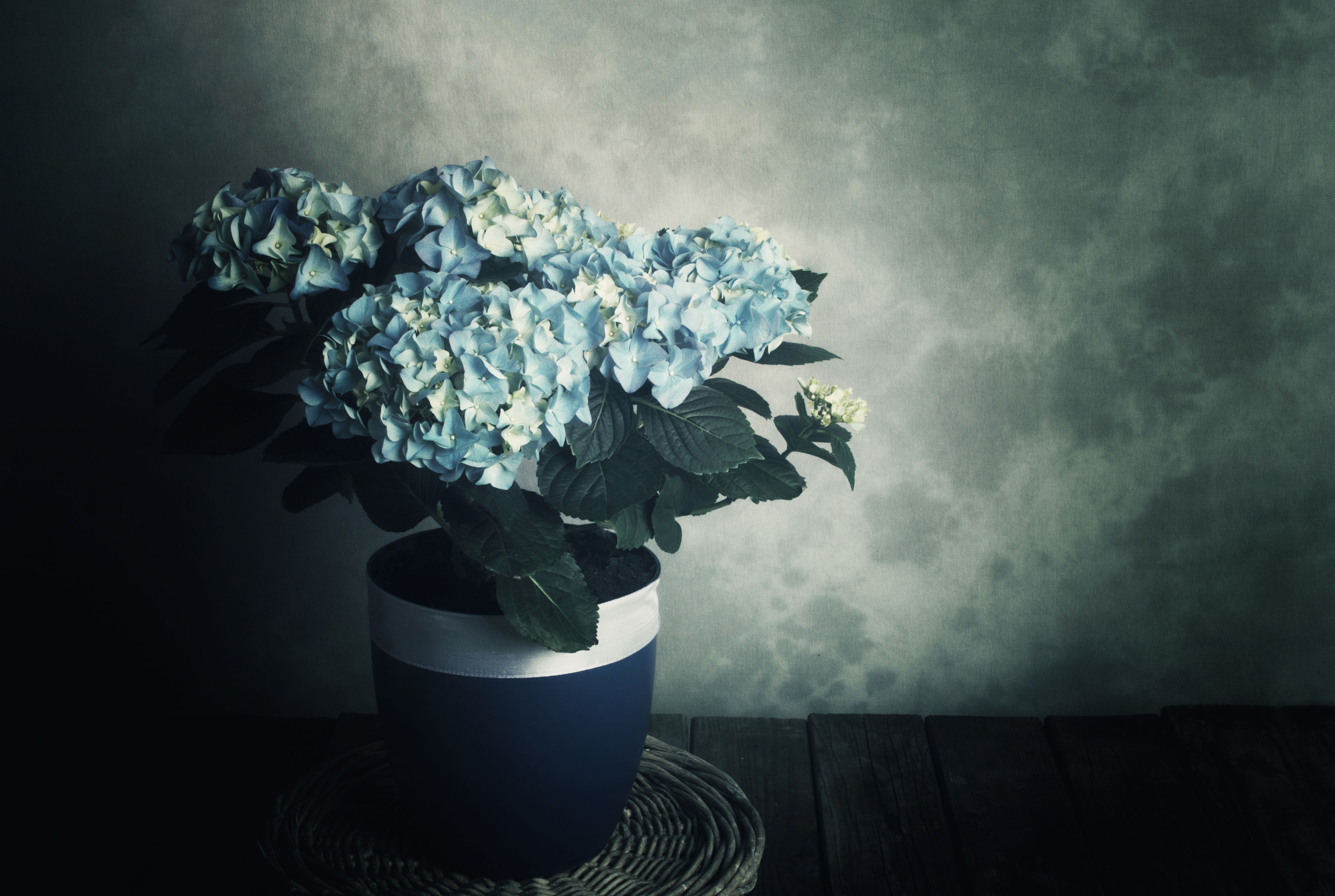
The secrets to potted hydrangea care are the perfect way into growing clouds and clouds of this wonderful plant. I fell in love with hydrangeas a few years back on holiday in the Hamptons, where every white clapperboard house was surrounded with great puffs of hydrangeas, billows of blues and pinks and purples and whites.
I made it my mission to grow hydrangeas back at home, to recreate that Hamptons style decor. On the whole, I've had more success when they're in pots. While established plants are hardy and grow back with new flowers every single year, new hydrangeas get nervous during winter, frost bites their buds and turns any new growth black.
Which is why potted hydrangea care is easier - you can keep them sheltered all year around, moving them in and out of the sun as they need. Those colorfully petalled clouds will be yours in no time, no matter how big, small or non-existent your outdoor space.
Potted hydrangea care - everything you need to know
1. Choose the right pot
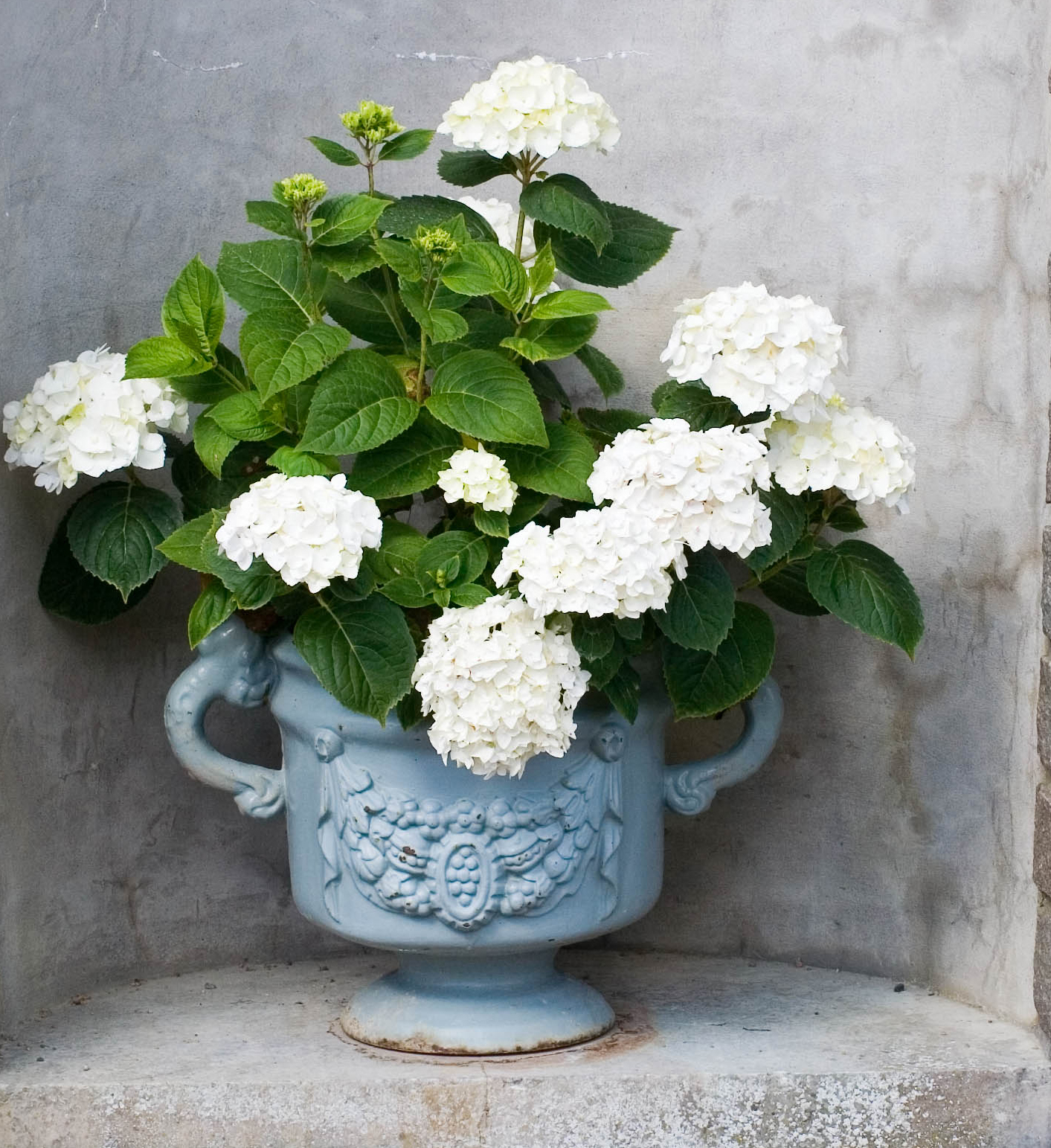
Much as the vintage vibe of this handled urn, above - which looks like it was found in a French flea market - is visually appealing, it's actually not that great to grow hydrangeas in. Hydrangea plants hate having their roots wet, so you need a pot with good drainage - either a plastic one with a hole in the bottom or a terracotta pot which allows water to seep through its porous surface.
However, this size of this antique pot is pretty much perfect. Hydrangeas grow far less down they do up, so you don't need your pot to be more than about 10 inches deep, and about 15 inches wide.
You can go bigger, sure, but the heavier your vessel, the harder it will be to lug around.
2. Fill your pot with the right soil
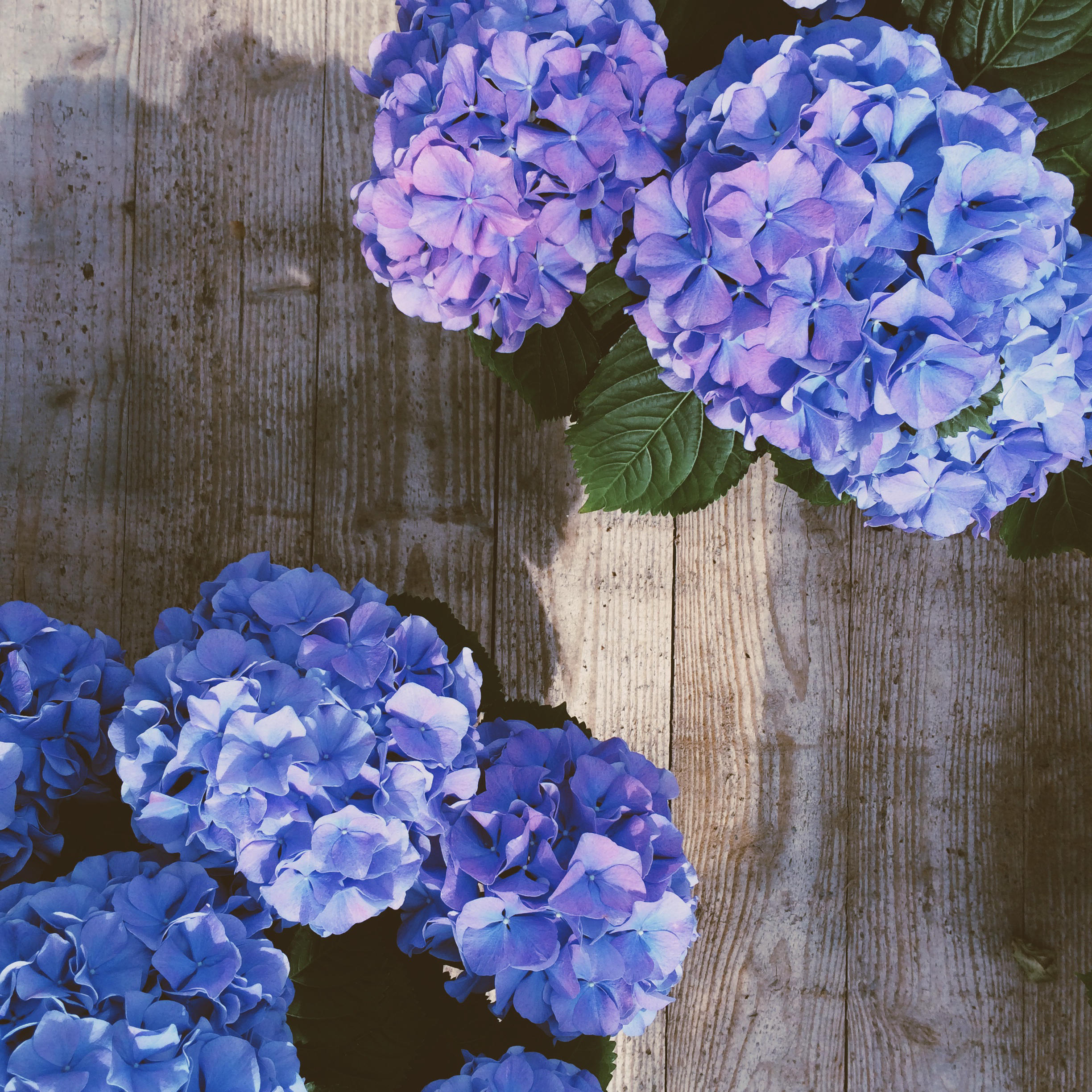
Because hydrangeas are fairly hardy - I won't go so far as to say foolproof, but they're not far off - they will grow in most soils.
The Livingetc newsletters are your inside source for what’s shaping interiors now - and what’s next. Discover trend forecasts, smart style ideas, and curated shopping inspiration that brings design to life. Subscribe today and stay ahead of the curve.
The strange thing about them, though, is that the type of soil they're in will affect what color petals they produce. Seriously. I thought this couldn't be true until I planted blue hydrangeas, Hamptons-style, in the alkali soil of my garden, and the next year they came up pink.
Fill the pot to about an inch with potting compost and if you're worried that blue hydrangeas might transform into another shade, add some used coffee grounds, too. This will up the acidic levels of the soil, and should keep those petals blue.
Clear enough space in the middle of the soil for the roots to be submerged, place your plant in the hole and fill with more soil. Press this down with your fingers so that the plant feels like it's held firmly, and water well.
3. Place your hydrangea pot in a sunny spot
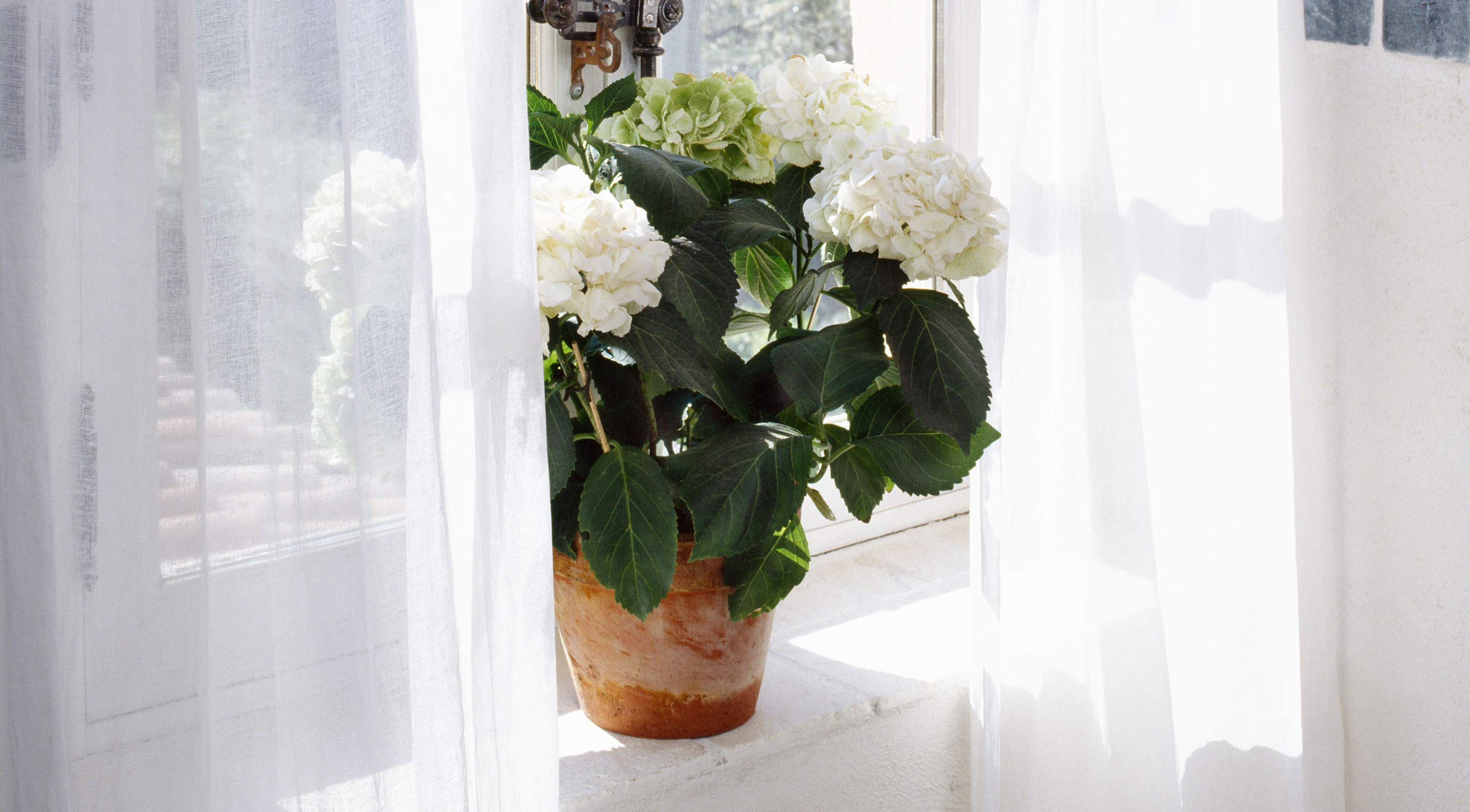
Hydrangeas like sunshine, and so choose your sunniest spot to place them in. This could be a window ledge, or it could be outside on a porch or patio.
The wonderful thing about growing them in a pot is being able to move them as the year changes, keeping them in eternal sunshine. Water them regularly - in winter, you will only need to water potted hydrangeas once a week, but in summer you could well need to water them every day, whenever the soil is dry to the touch.
Watering them at night is the best time, so they have time to feel refreshed overnight after the sunshine of the day.
4. Deadhead your hydrangeas
When the hydrangea blooms begin to go a little brown, cut them off just above the first set of leaves. Keep these stems - they make for really pretty and surprisingly contemporary dried flower displays. Some varieties will produce more flowers and keep blooming throughout the summer.
You can also cut your flowers off when they're in their prime, and bring them inside. Our guide for how to look after hydrangeas in a vase will ensure they stay looking good for as long as possible.
As winter approaches, stop deadheading the hydrangea, and instead leaved the browning blooms on their stems. They protect the new growth that will start in early Spring - you can chop them off once you start to notice green buds reappear.
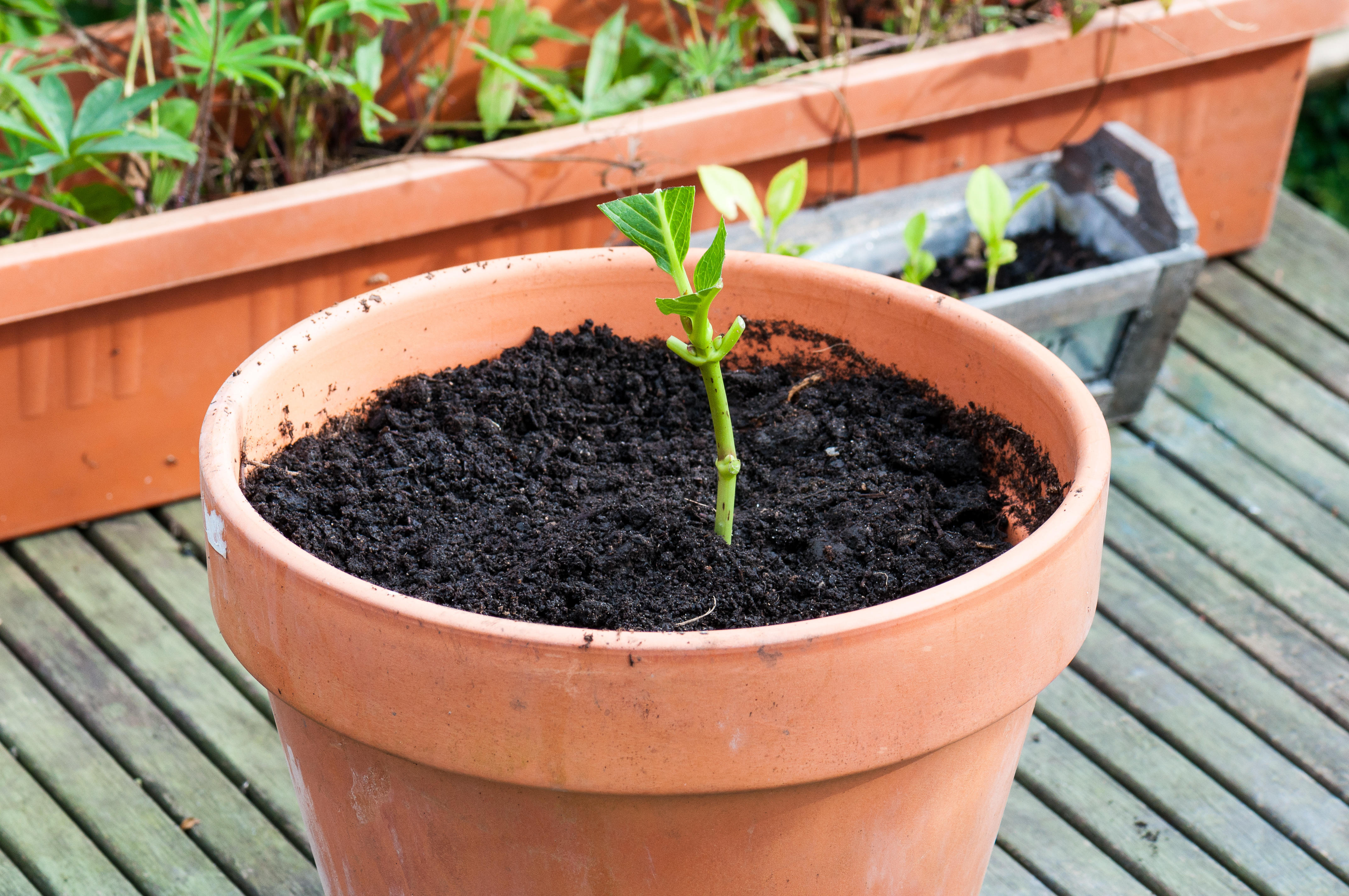
Can you grow hydrangea from seed?
Yes, you can grow hydrangea plants from seed, but the easiest way to care for them is to buy an exisiting plant. Or grow one from a cutting of an existing plant - a brilliantly satisfying and cheap way to increase your collection.
Cut a healthy hydrangea stem from the main plant towards the end of the summer. You want one with a couple of stems branching off it, and a leaf at the end. Slice the top off the leave, so you're left with a flat edge, and slice the stems off the side of the main stem you're hoping to grow from. Dip this in honey to sterilize it, and then rooting hormone if you want to double your chances it will grow.
Put this into a pot of soil, water well and cover with a plastic bag, tied with an elastic band around the rim of the pot, to keep it secure and like a mini-greenhouse. Water once a week, it should start to bud in about two to three months.
The editor of Livingetc, Pip Rich (formerly Pip McCormac) is a lifestyle journalist of almost 20 years experience working for some of the UK's biggest titles. As well as holding staff positions at Sunday Times Style, Red and Grazia he has written for the Guardian, The Telegraph, The Times and ES Magazine. The host of Livingetc's podcast Home Truths, Pip has also published three books - his most recent, A New Leaf, was released in December 2021 and is about the homes of architects who have filled their spaces with houseplants. He has recently moved out of London - and a home that ELLE Decoration called one of the ten best small spaces in the world - to start a new renovation project in Somerset.